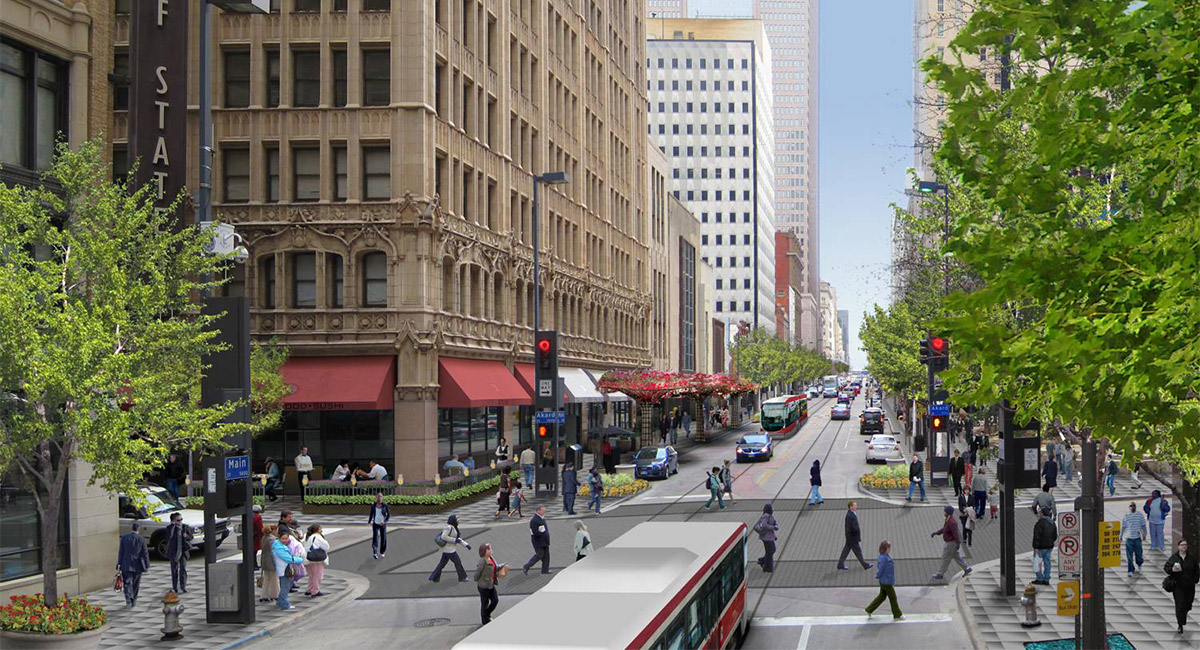
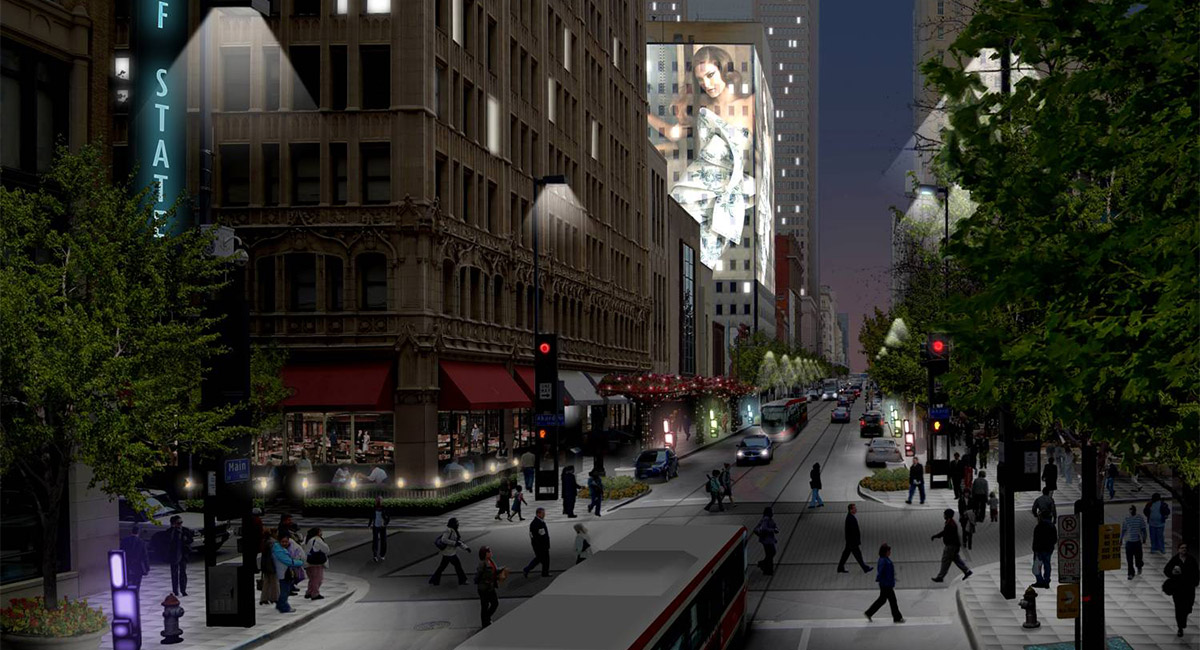
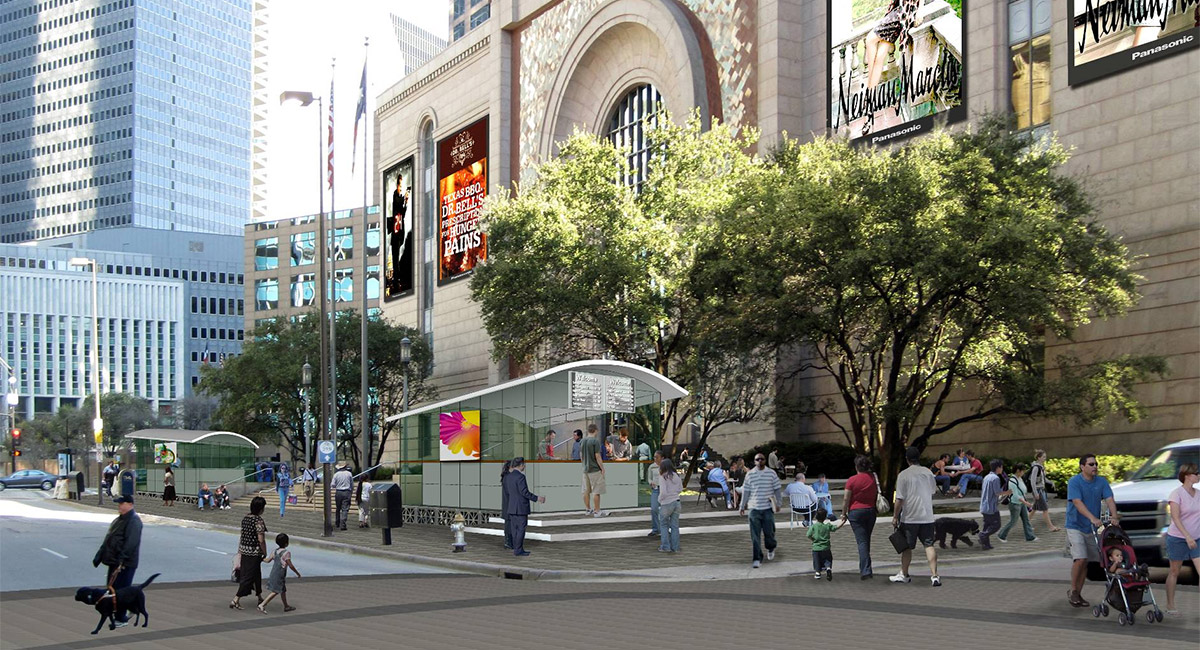
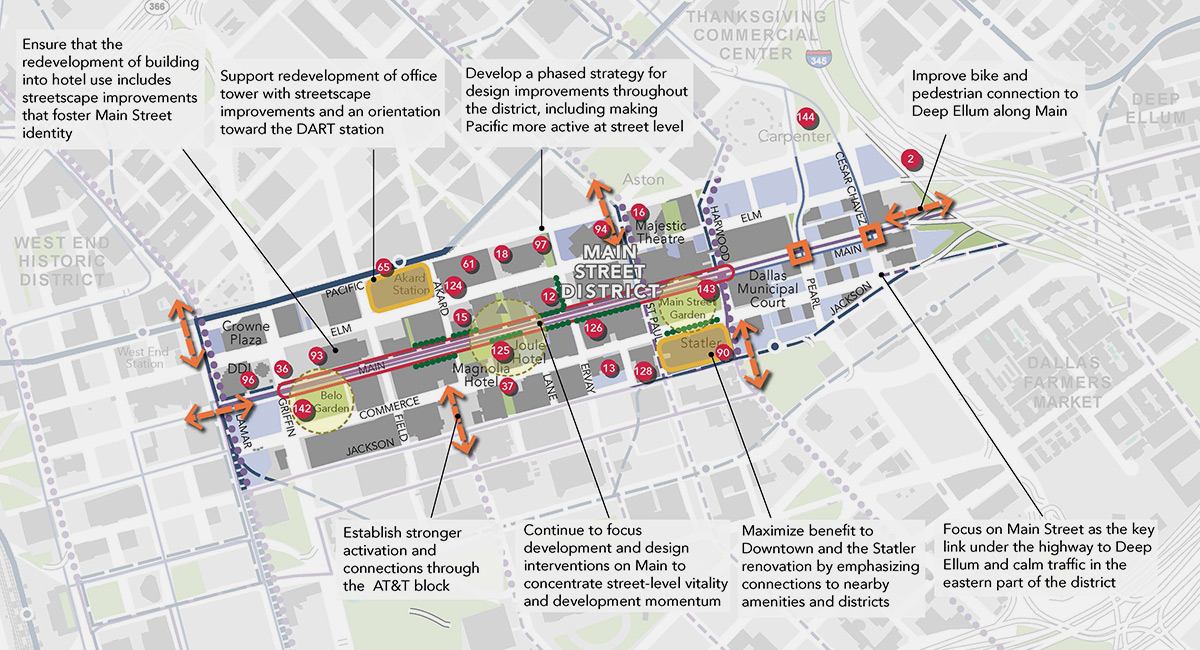
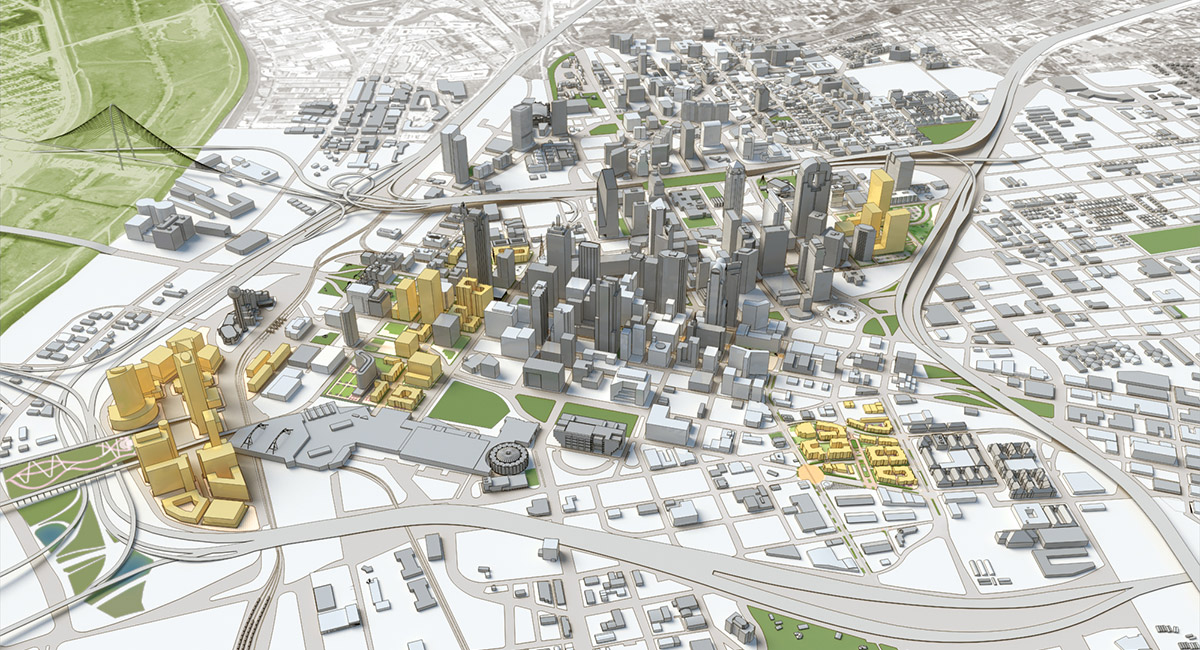
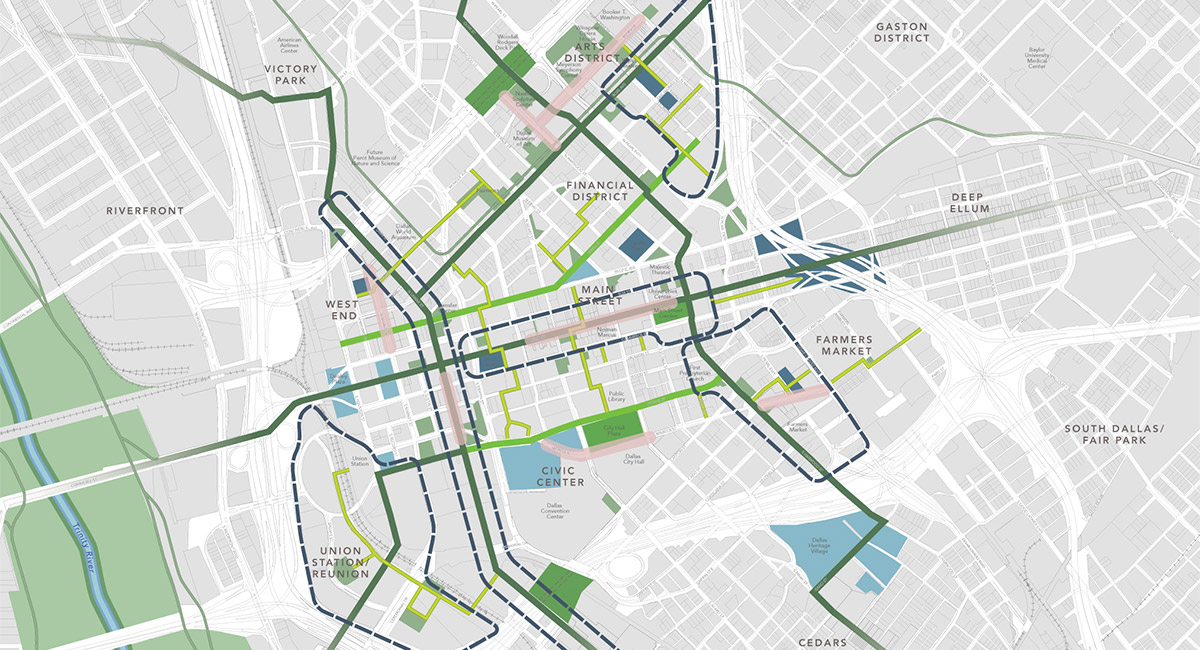
Dallas Action, Retail Activation and TOD Plans
After years of new investment and development, Downtown Dallas was ready to build on its many strengths to create a premier, 24/7 urban environment—a modern, transit-oriented, walkable and livable downtown. Its collaborative, participatory planning process brought together the City, Downtown Dallas, Inc., and over 40 business, developer, foundation and neighborhood partners, and has resulted in visionary, comprehensive and strategic action plans. Dallas’ inclusive planning and design is guiding both public and private investments, based on economic, social, environmental and culturally sensitive policies that allow everyone to improve economically as the physical area improves.
Downtown Dallas 360° Plan
The collaborative process resulted in an Action Plan for the Downtown area and its immediate neighborhoods. The unique public-private partnership aimed to capitalize on investments, build on existing and emerging district identities, strengthen connections within and outside of the freeway loop— activating streets and animating public spaces. The plan guides future investments, developments and decisions. Key components are a set of “Transformative Strategies,” focusing on the recommendations and best practices in urban design, Complete Streets, parks and open spaces, parking, housing, and transit planning and development. A major outcome of the 360° process has been a Downtown transit network, with options for a new DART light rail line and several streetcar “desire lines” to take advantage of the most opportunities for housing production, job growth and urban revitalization.
Dallas Main Street District Retail Activation Strategy
The Retail Activation Strategy was part of the MIG-led Dallas Downtown Development Plan. This detailed, near-term action plan was developed through a public-private partnership to help direct, prioritize, select and fund public and private improvements to streets, parks, plazas and buildings in the Main Street District. It also outlines the approach for tenanting, operations, and management of the area. It’s being used to allocate funds and incentives, foster innovative solutions, and ensure a level of design consistency within the District. Implementation has included new development, as well as refurbishing plaza space, attracting new retail tenants, and purchasing a long-vacant historic hotel for redevelopment.
Lancaster Corridor Plan Implementation
The HUD Community Challenge Grant-funded project is leveraging transit investments to create safe, attractive and thriving community centers that offer a range of affordable housing options, improved access to transit, increased walkability, safety, health, livability and employment options. The City focused planning in five communities located along Dallas Area Rapid Transit (DART) light rail lines that have suffered low investment or disinvestment and have seen a shrinking population and tax base. Working with a Citizens Advisory Committee (CAC), composed of citizens representing community interests—including those of the area’s large African-American and Latino populations— the City is encouraging the development of workforce housing, mixed-income housing, and mixed-use housing. Catalyst sites within each community
